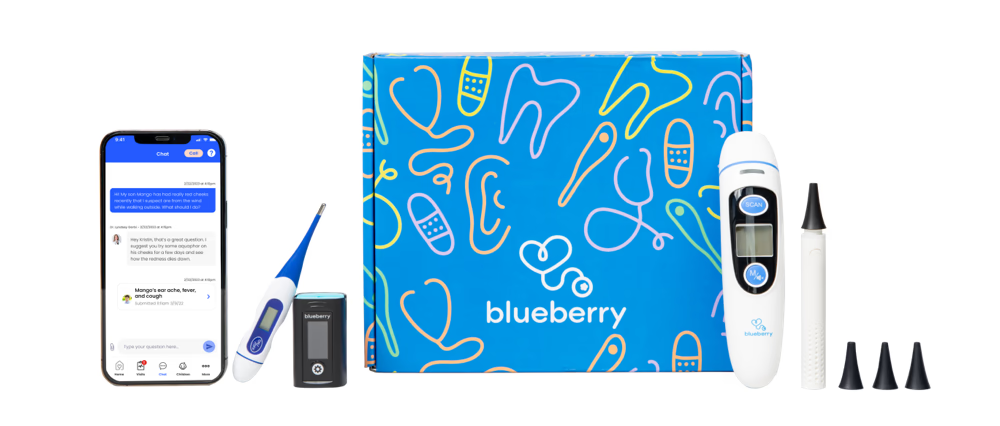As a new parent, you may find yourself constantly looking for signs indicating your baby's development. One such milestone is teething, an event often accompanied by sleepless nights and cranky days. But did you know that your baby's teething process could also be linked to another common issue - diaper rash?
A teething diaper rash may seem like an unlikely connection, but in some studies parents have noticed diarrhea and diaper rashes as their baby develops new teeth. Teething upsets your baby enough - but adding irritated skin due to a diaper rash in the equation can overwhelm both baby and parents.
The teething process
Tooth eruption, also known as teething, typically begins around six months of age, although it can start as early as three months or as late as one year. It's the process by which a baby's first teeth, known as primary teeth or baby teeth, sequentially erupt through the gums. It can be an uncomfortable experience for some babies, resulting in fussiness, sleep disturbances, swollen gums, and more.
The teething process can be a challenging time for both babies and their parents. After all, the child is experiencing new and uncomfortable changes while the parent is attempting to soothe and manage their teething baby. Despite the discomfort, it's an entirely normal part of your baby's development.
What are teething symptoms?
Teething symptoms can vary widely among babies, with some barely noticing the process while others experience significant discomfort. Common signs of teething include:
- Excess drool, which can often lead to a drool rash around the mouth
- An increased urge to bite on hard objects due to pressure on teething babies' gums
- Fussiness and irritability in the week leading up to a tooth's arrival
Other common symptoms include difficulty sleeping, decreased appetite for solid foods, and ear rubbing.
How to soothe your teething baby
With some patience and understanding, parents can help make this process as comfortable as possible for their teething baby. You can soothe your baby's gums by providing a cold teething toy for them to chew on or gently rubbing or applying pressure to the gums.
On occasion, over-the-counter pain medications like ibuprofen and acetaminophen are recommended to reduce teething pain. However, it's important to check with a medical professional before administering any medications or topical treatments to ensure their safety.
What causes diaper rash?
Diaper rash in babies is primarily caused by prolonged wetness or moisture on the skin. Diapers that are tight or left unchanged for extended periods can trap moisture and cause skin irritation, resulting in a rash.
Other contributors to diaper rash include:
- The introduction of new foods, which can alter a baby's stool or cause diarrhea
- Contact with irritating substances, such as certain wipes, soaps, laundry detergents, and fabric softeners
- Snug fit diapers or clothing that rubs against the skin
Additionally, infections from yeast or bacteria can also cause diaper rash, especially if the skin is irritated or damaged.
Does teething cause diaper rash?
In short: no, teething does not directly cause diaper rash. However, there is an indirect correlation between teething and diaper rash; specifically, saliva can be a risk factor for developing diaper rash.
How excess saliva contributes to diaper rash
Babies tend to produce a lot of saliva while teething. This is a natural response that helps to lubricate the gums and relieve some of the discomfort associated with teething.
Not only can the excess drool cause a drool rash around their mouth, but the additional saliva may also end up swallowed and, subsequently, introduced into the gastrointestinal tract. This spike in saliva can alter the balance of digestive fluids, changing the acidity of stool and resulting in loose stools or diarrhea, which can irritate skin and result in diaper rash.
Parents can reduce the amount of saliva babies swallow by wiping their mouths and chin regularly, especially after feedings. Additionally, it often helps to keep babies upright for a few minutes after feeding.
Preventing and treating diaper rashes
How do you prevent diaper rash?
Preventing diaper rash primarily involves maintaining the cleanliness and dryness of the baby's diaper area. Regular diaper changes are crucial, ensuring the baby is not left in a wet or soiled diaper for long periods. After each diaper change, clean the area with warm water or fragrance-free, alcohol-free wipes. Gently pat the skin dry or allow it to air dry completely before putting on a new diaper.
The use of a diaper rash cream or ointment that contains zinc oxide or petroleum jelly can also aid in creating a protective barrier between the baby's skin and potential irritants. Note: steer clear of products such as talcum powder as these can actually trap moisture and worsen existing cases of diaper rash.
Remember, every baby is unique; if persistent diaper rash occurs despite these preventive measures, it's best to consult your child's healthcare provider for personalized advice.
How do you treat diaper rash?
Treating diaper rash involves a few key steps geared toward creating a dry, soothing environment for the baby's skin. Start by cleaning the diaper area gently with warm water and a soft cloth, avoiding soaps or wipes with fragrances or alcohol that may irritate the skin further.
After cleaning, pat the skin dry or let it air dry before putting on a new diaper. Applying a thick layer of diaper rash cream, ideally one that contains zinc oxide, can help protect the baby's skin from moisture. In some instances, using a mild hydrocortisone cream may be recommended by your baby's doctor to reduce inflammation.
Additionally, giving your baby's irritated skin a break by allowing diaper-free time each day can help keep the area ventilated and dry.
If a rash doesn't improve within a few days or worsens, speak with your child's pediatrician, as your baby may need a prescription medication to treat their diaper rash, or the rash may have another cause.
<div fs-richtext-component="cta" class="content_cta">
<div class="content-cta__title">
<div class="y-tex-xxs text-color-white">
Blueberry - Rated best for online pediatrics!
</div>
</div>
<div class="y-text-2xl text-color-white">
👩🏽⚕️ Chat With A Pediatrician About Your Child's Symptoms
</div>
<a href="https://app.blueberrypediatrics.com/join_blueberry_18a_cart?promo=blog100"
target="_blank" class="content-cta_btn w-button">
Get Started
</a>
<link rel="prefetch" href="https://app.blueberrypediatrics.com/join_blueberry_18a_cart?promo=blog100">
Concerns about your child's teething symptoms or diaper rash?
Teething can be an exciting time of development for your baby, but it’s not without challenges. If you have concerns about your baby’s teething experience or diaper rash, talk to a licensed pediatrician at Blueberry Pediatrics 24/7 over text, phone, or video; no question is too big or small. The Blueberry pediatric team can provide guidance and treatment depending on your child's needs.
The best part? An entire year of Blueberry membership costs less than the typical copay of a single urgent care visit, and one membership covers all of the children in your household! It's like a doctor's office in your house. Sign up here.
.png)







.svg)






.svg)
.svg)